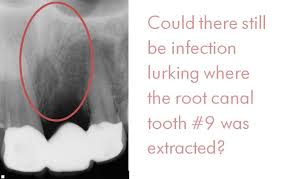- Home
- Editorial
- News
- Practice Guidelines
- Anesthesiology Guidelines
- Cancer Guidelines
- Cardiac Sciences Guidelines
- Critical Care Guidelines
- Dentistry Guidelines
- Dermatology Guidelines
- Diabetes and Endo Guidelines
- Diagnostics Guidelines
- ENT Guidelines
- Featured Practice Guidelines
- Gastroenterology Guidelines
- Geriatrics Guidelines
- Medicine Guidelines
- Nephrology Guidelines
- Neurosciences Guidelines
- Obs and Gynae Guidelines
- Ophthalmology Guidelines
- Orthopaedics Guidelines
- Paediatrics Guidelines
- Psychiatry Guidelines
- Pulmonology Guidelines
- Radiology Guidelines
- Surgery Guidelines
- Urology Guidelines
Prevention of Orthpaedic Implant Infection for Dentals Procedures:AAOS Guideline

Implant-associated infections are the result of bacteria adhesion to an implant surface and subsequent bio film formation at the implantation site.Formation of bio film takes place in several stages, starting with rapid surface attachment, followed by multi layered bacterial cell proliferation and inter cellular adhesion in an extracellular polysaccharides matrix. The formation of bio films on medical devices presents three major problems. First, bacterial communities on these surfaces represent a reservoir of bacteria that can be shed into the body, leading to a chronic infection. Second, bio film bacteria are highly resistant to treatment with antibiotics; therefore, once these bacterial communities form, they are extremely difficult to eliminate with conventional antimicrobial therapies. Finally, because host responses and antimicrobial therapies are often unable to eliminate bacteria growing in a bio film, a chronic inflammatory response at the site of the bio film may be produced.
If bacterial adhesion occurs before tissue regeneration takes place, host defences often cannot prevent surface colonization for certain bacterial species that are capable of forming a protective bio film layer. Therefore, inhibiting bacterial adhesion is essential to prevent implant-associated infection, because bio film are extremely resistant to both the immune system and antibiotics. Therefore, to succeed in orthopaedic implants, implant materials must be habitable by bone-forming cells (favouring adhesion of osteoblasts), hinder formation of soft connective tissue (hindering adhesion of fibroblasts) and be anti-infective (discouraging bacterial adhesion).
Tens of millions of medical devices are used each year and, in spite of many advances in bio materials, a significant proportion of each type of device becomes colonized by bacteria and becomes the focus of an implant-related infection. A very large proportion of all implant-related infections are caused by staphylococci (roughly four out of five), and two single staphylococcal species, respectively Staphylococcus aureus and Staphylococcus epidermidis, account together for two out of three infection isolates. They represent, in absolute, the main causative agents in orthopaedics. While this review relates to bacteria in general, more emphasis is given to S. aureus and S. epidermidis since they are the main causative agents of implant-related infections in orthopaedics.
In the year 2012, American Academy of Orthopedic Surgeons and American Dental Association came out with the guidelines on "Prevention of Orthpaedic Implant Infection in Patients Undergoing Dental Procedures."
The major recommendations are as follows:-
1. The practitioner might consider discontinuing the practice of routinely prescribing prophylactic antibiotics for patients with hip and knee prosthetic joint implants undergoing dental procedures.(Grade of Recommendation: Limited Description)
2. We are unable to recommend for or against the use of topical oral antimicrobials in patients with prosthetic joint implants or other orthopaedic implants undergoing dental procedures. Grade of Recommendation: Inconclusive Description:
3. In the absence of reliable evidence linking poor oral health to prosthetic joint infection, it is the opinion of the work group that patients with prosthetic joint implants or other orthopaedic implants maintain appropriate oral hygiene. (Grade of Recommendation: Consensus Description)
To read more you can click on the following link:
http://www.aaos.org/uploadedFiles/PreProduction/Quality/Guidelines_and_Reviews/PUDP_guideline.pdf
dental proceduresorthopedic implant infectionS aureusS epidermidisStaphylococcus aureusStaphylococcus epidermidis
Source : American Dental AssociationNext Story
NO DATA FOUND

Disclaimer: This site is primarily intended for healthcare professionals. Any content/information on this website does not replace the advice of medical and/or health professionals and should not be construed as medical/diagnostic advice/endorsement or prescription. Use of this site is subject to our terms of use, privacy policy, advertisement policy. © 2020 Minerva Medical Treatment Pvt Ltd